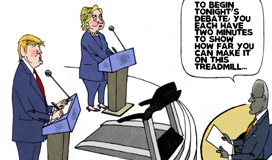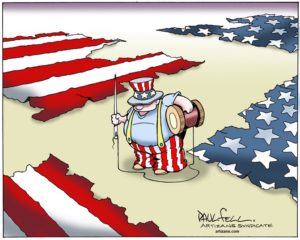Real life and politics are anything but boring these days. We can use political cartoons as a template for language lessons with our students.
Related Goals:
inferencing, describing, understanding humor, answering questions, asking questions, vocabulary.
Click here for a great selection of political cartoons from Upfront (scholastic) for free. These are difficult to download so copy and paste them to a new word document.
Here are some examples of cartoons:





The cartoons have a blurb underneath them. Have students circle unfamiliar words. Then use the questions provided at the bottom. Most of the questions could be characterized as HOTS questions. These questions require higher order thinking skills. You can create your own simpler “wh” questions if that would be more appropriate for your students.
example:
Last week, Democratic presidential candidate Hillary Clinton had to suddenly leave a 9/11 ceremony because she was feeling ill. Later, it was revealed that Clinton had been diagnosed with pneumonia several days before the ceremony but had kept it secret from the public. That raised questions about whether Clinton has other health conditions. It has also put the spotlight on her Republican rival, Donald Trump, who has been just as reluctant to release detailed information about his health. Questions about the candidates’ health are expected to come up in the first presidential debate, on September 26.
- Who are the people in the cartoon, and where is it taking place?
- Why is there a treadmill in the middle of the stage?
- How does the cartoonist use humor to illustrate a point about the candidates’ health records?
- Previous presidential candidates, including Franklin D. Roosevelt and John F. Kennedy, hid medical conditions from voters. Do you think that health information should remain a private issue, or should citizens be allowed to demand medical information about presidential candidates?
- Do you think a health condition could hurt a candidate’s chances of being elected? Explain.
